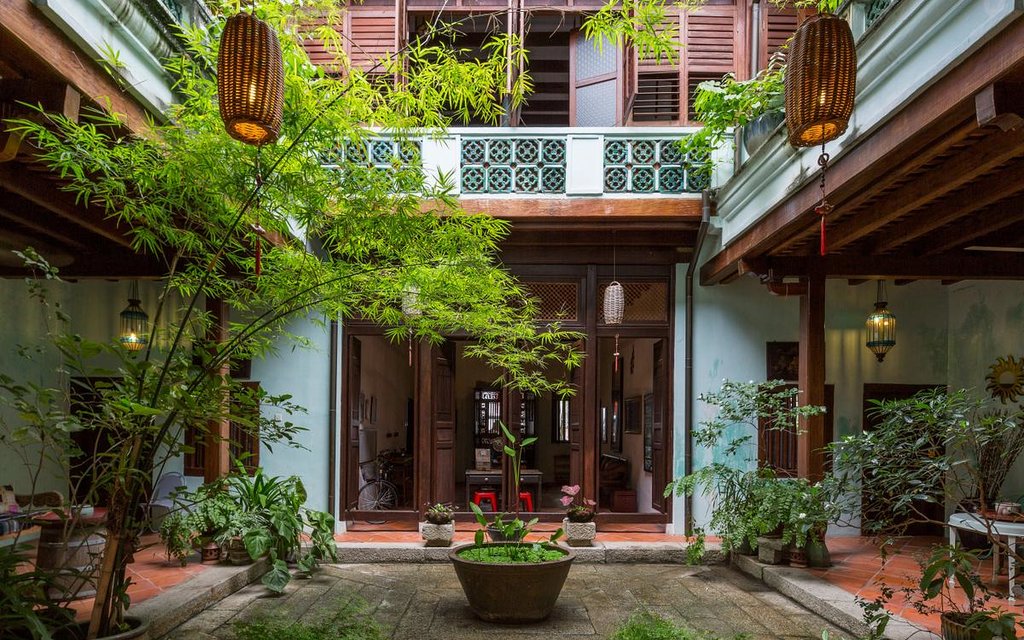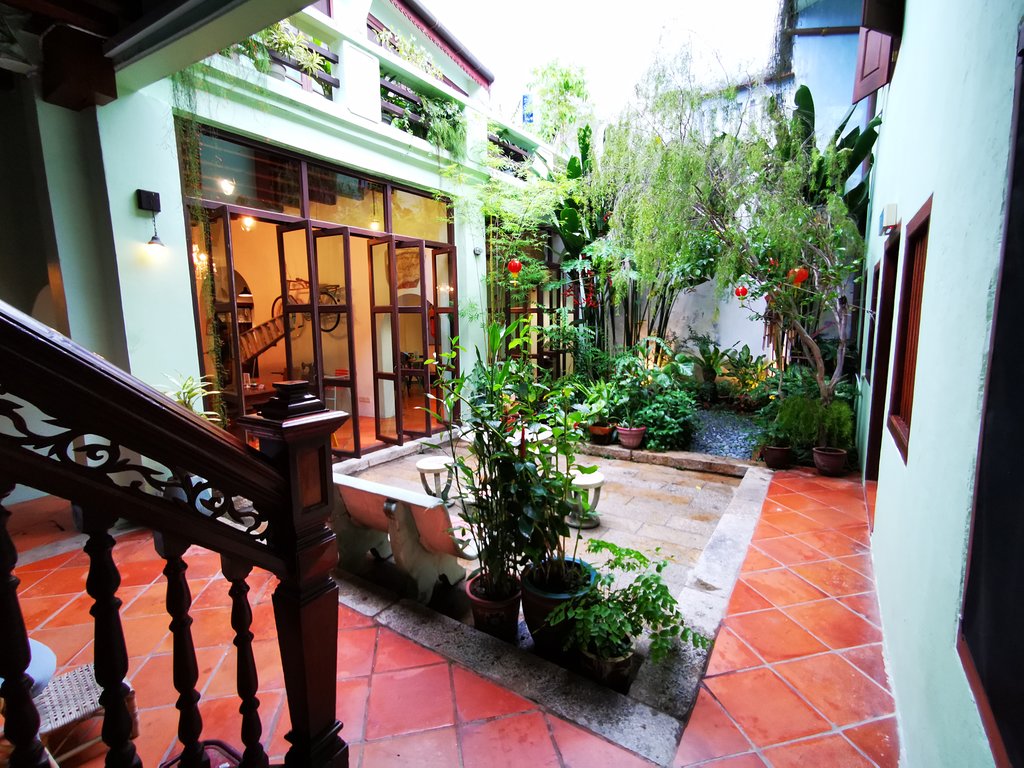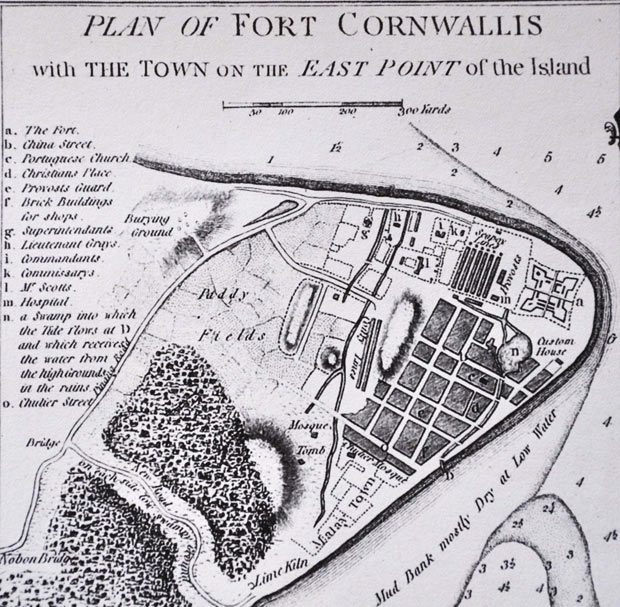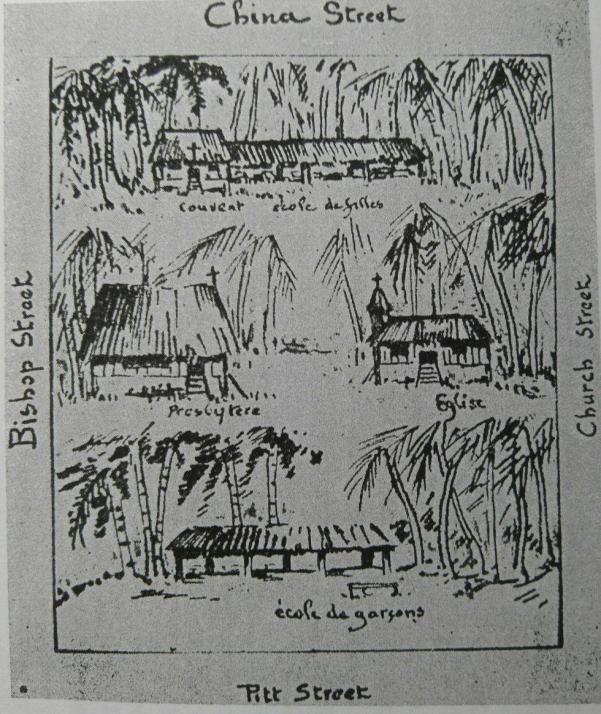ARCHITECTURE
There are a number of features that distinguish the architecture of No. 25 China Street from the properties surrounding it.
The most salient of these features is the fact that it is designed to look like three houses from the street level, giving it a humble coherence with its surroundings. This gave it the description “Three Bay House” (三开间).

In addition to this exterior feature, the main entrance to the home is set off a “Five Foot Way” (五 ⻆角基), literally a five foot wide corridor that characterizes much of the architecture of George Town from this period.
The facade of the entrance was ornately crafted by skilled craftsmen. Using frieze mosaics and other materials, they decorated it with traditional motifs associated with prosperity, longevity and protection. These include bats, pomegranates, fish, birds, peonies, as well as qilin, the mythical chimerical creature popular in Chinese culture, associated with auspiciousness. But perhaps the most striking elements of the facade are the panels depicting two long-tailed phoenix, and the central scene depicting the eight immortals, each of whom is believed to be endowed with the power to bestow life or destroy evil.

Located on a plot size of around 600 sq. meters, the mansion was built on the largest plot of land on China Street. Including its second floor, the mansion has a built up area of around 1000 sq. meters. The house has 6 halls and 12 rooms spread over 2 floors. Altogether, there are 64 pairs of doors and window shutters. Historically, the mansion had two entrances, one on China Street and the other from the rear on Lorong Chee Em.
The interior layout of the mansion is based on the traditional Fujianese deep courtyard style. The original granite entrance leads into a high-ceilinged hall, which marks the first axis of the three distinct spaces or living areas that characterize this Three Bay House. Each of these distinct spaces is separated by a central sunken courtyard, providing ample sunlight to the mansion, and allowing for the flourishing of a traditional garden.
To the side of the courtyards, balconies provide coveted access along the length of the property. The walls are thick load-bearing walls constructed with brick and lime plaster with a lime wash finish. Timber supports and beams are equally solid and generous in size. A distinguishing feature of this is that interlocking wooden brackets known as “dougong” hold the upper pillars together. This was one of the most important elements unique to traditional Chinese architecture.
The Chinese science of fengshui (literally meaning wind-water) is founded upon the harmony between humans and their natural environment, and it is clear that fengshui was given important consideration in the design of the mansion. In particular, the high ceilings, open courtyards, natural ventilation and wood-fired terracotta tile floors all work together to bring nature into the space, providing a sense of harmony and balance.
No. 25 China Street is known for being one of the only Three Bay Houses in George Town to have retained distinct Fujianese architectural features.
LEBUH CHINA
In Chinese, China Street is simply known as ⼤大街 or Main Street, giving insight into its role as the pulsating centre of the life of the Chinese migrant community.
China Street is one of the oldest streets in George Town, along with the four main streets planned by Francis Light: Light Street, Beach Street, Chulia Street and Pitt Street8. Whereas these four streets were planned, China Street is believed to have emerged organically and in response to the growing migrant population under the leadership of the Kapitan Koh Lay Huan. These streets are all located a stone’s throw away from Fort Cornwallis, where Light first landed in 1786. Together, these main streets constitute the earliest central business district of the island.
Early documents like the Popham Map (pictured) reveal that China Street was in existence at least as early as 1798. Later, following land reclamation at the end of the 19th century, China Street was extended, creating China Street Ghaut.




